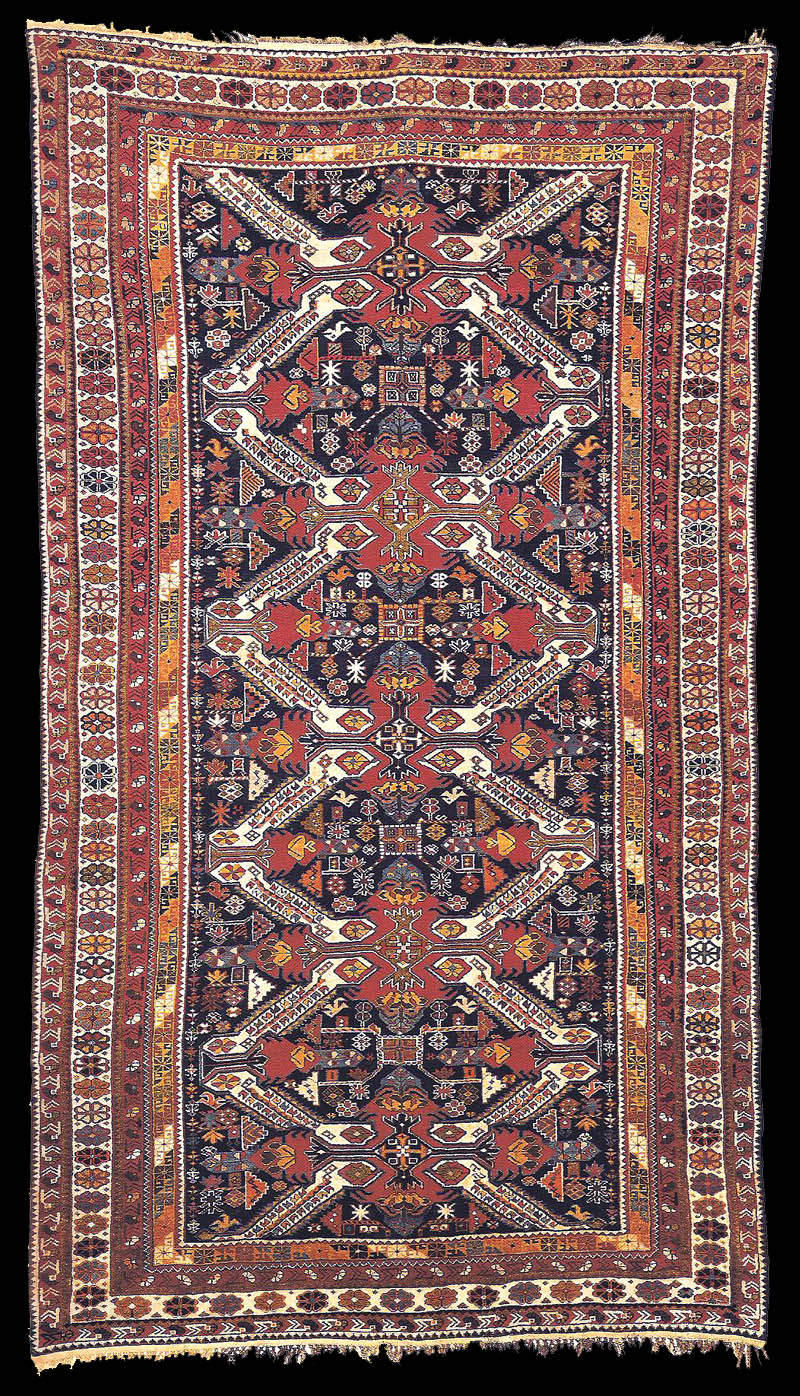|
11 Gollu Chichi
(so-called Zeikhur) Kuba district, Kuba 280 X 157 cm Beginning of the 20th
century
A cross composition with palmettes on either end is displayed on the central
vertical axis of the dark-blue central field. Four diagonal "Zeikhur" bars
emerge from the palmettes to form diamonds which look like a wreath. They
are in this case somewhat small compared to the older pieces in this group.
L. Kerimov reports that the weavers call the medallion akgöl, that is, white
medallion whose bars can be interpreted as arms. A multitude of small
ornaments fill the remaining field. The main border on a light ground is
made up of a simple row of rosettes in alternating colours. It is flanked by
two minor borders of carnations on a dark brownish-red ground. The classical
inner border comprises an alternating row of squared rosettes and squares in
which reciprocal double bird heads appear on a brownish-orange ground.
Warps: Wool, Z2S, ivory, beige and dark brown.
Wefts: Cotton, Z2, white, 2 waved wefts.
Pile: Wool,Z2,
Pile Height: 3 mm.
Knots: Sy 1, \, H50, V35 = c. 1,750 Kn/dm2.
Handle: Velvet-like, thin, smooth.
Upper End: c. 1.5 cm cotton simple tapestry weave, groups of warp-threads
knotted in 2 staggered rows.
Lower End: c. 0.5 cm remainder of cotton simple tapestry weave.
Selvedge: Thin, round, white cotton shirazi.
Colours: 10; red, brownish-orange, dark yellow, beige, dark reddish-brown,
dark olive-brown, midnight-blue, blue, green, ivory.
Condition: Good.
Remarks: In terms of colour, the carpet is quite good. In terms of
ornamentation, it differs from pieces of the classical period (19th century)
mainly because of the prominence of the "Zeikhur" bars. The classical pieces
have two, or at the most three borders.
Literature: L. Kerimov II, p. 150, ill 123; Doris Eder, Kaukasische Teppiche,
Munich 1979, plate 379.
published at Siyawouch
Azadi "Azerbaijani Caucasian
rugs" plate no: 11
 |

